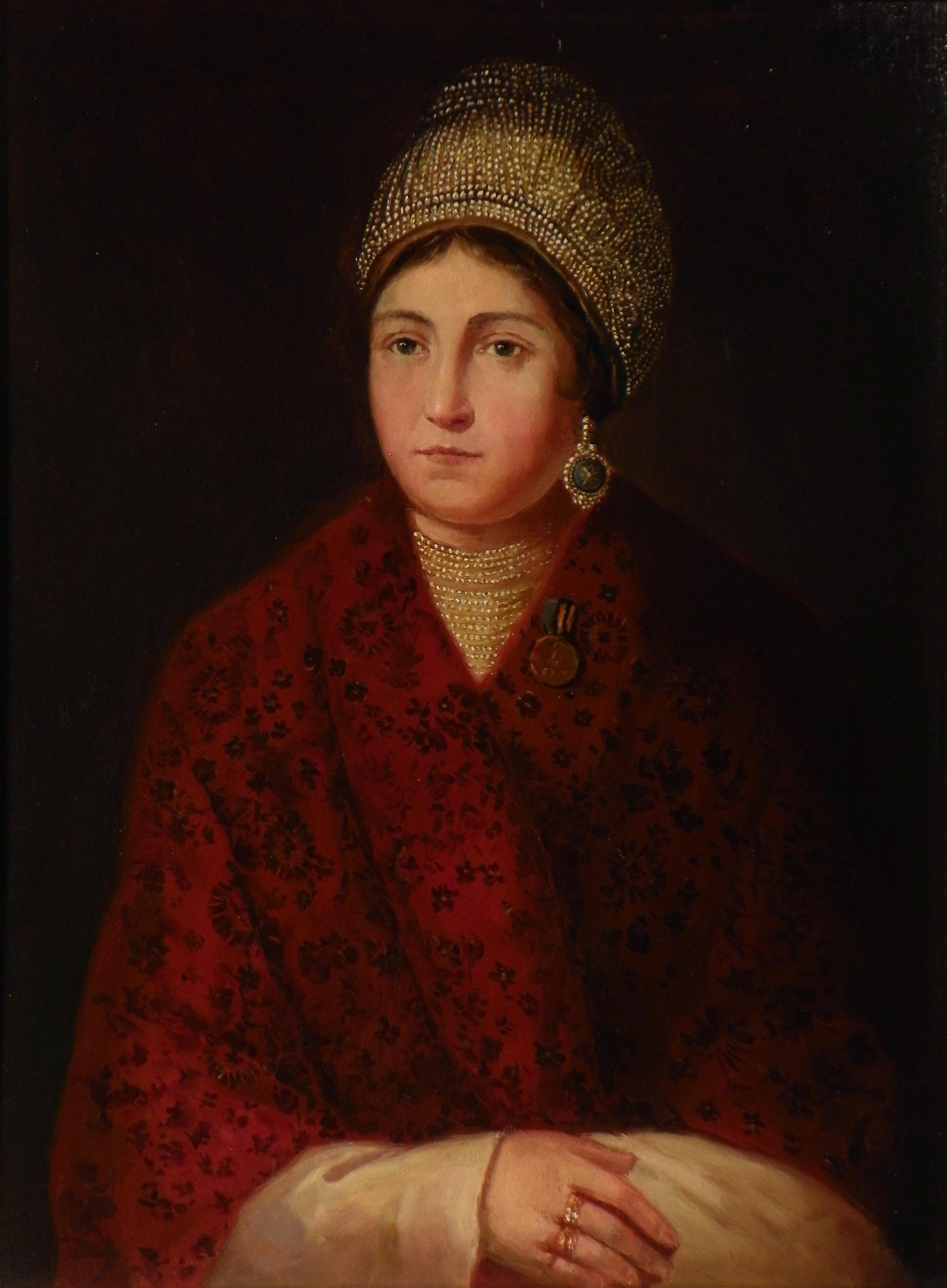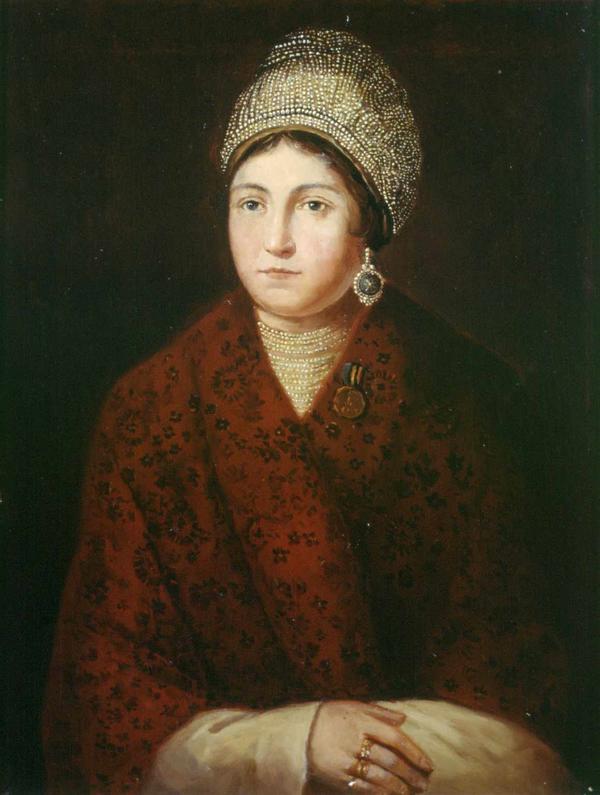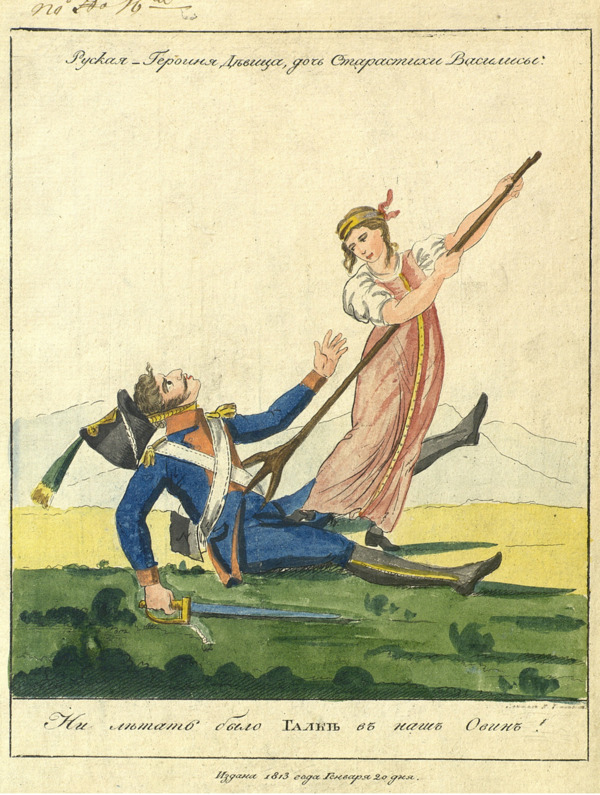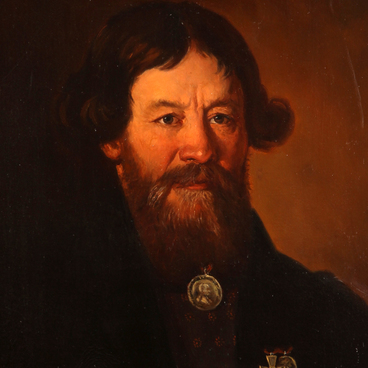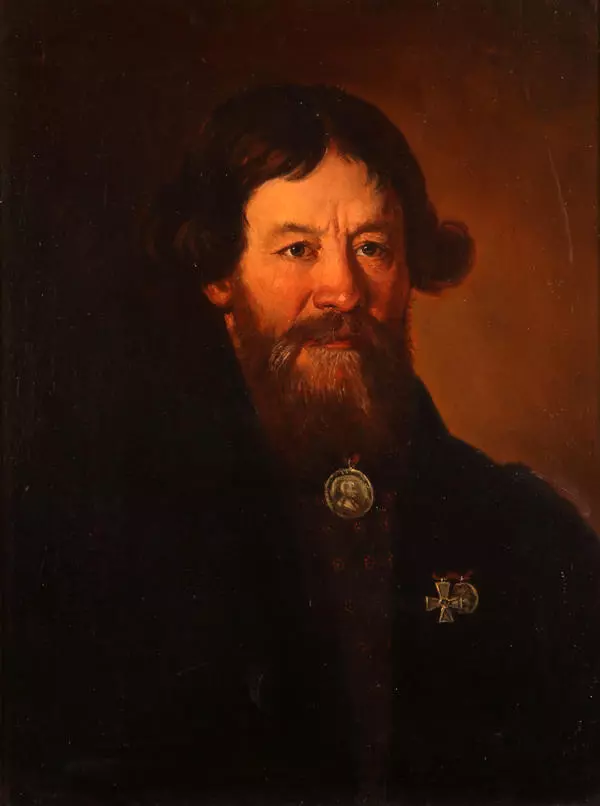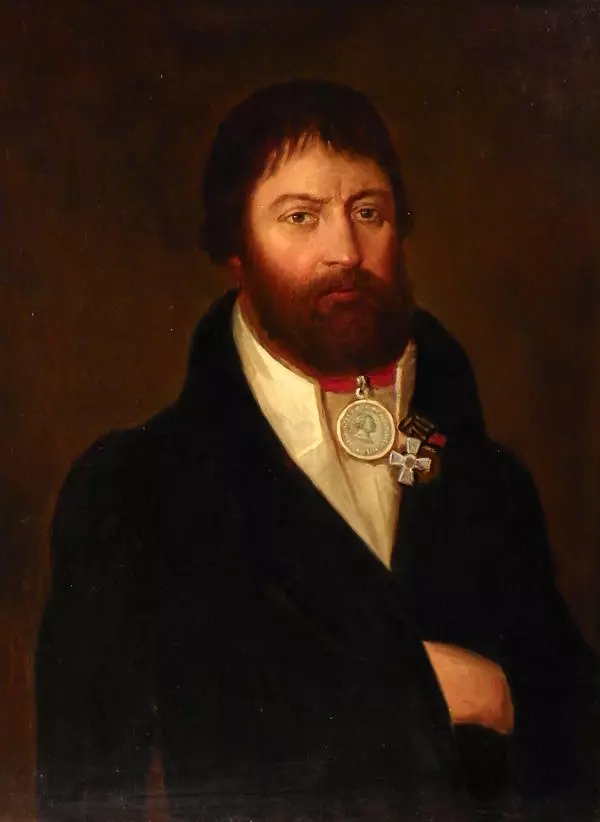Vasilisa Kozhina was a peasant woman, wife of the starosta (head) of the Gorshkov farm in the Smolensk Province Sychyov District. Her story appeared for the first time in 1812 in major Saint Petersburg magazine Syn Otechestva (The Motherland’s Son). The article was entitled precisely “Starosta”s Wife Vasilisa”.
The magazine described a famous story – helping to escort French prisoners, Vasilisa killed with her scythe one of them who tried to put up a resistance. “One of the captured officers, being vexed that a woman dared to rule over him, did not obey her. Vasilisa right away hit him on the head with her scythe, with him falling dead at her feet, and she exclaimed: “All of you, thieves, dogs, will get the same, if you only move! I”ve already bust open the heads of twenty seven of your ruffians like this! Forward, to the city! “.
They also said that, for her deed, Vasilisa Kozhina was awarded a medal and a monetary allowance of 500 rubles. For a peasant of those days, the amount was quite considerable. For comparison: a good horse could be purchased for 200 rubles, a surf with a family – for 400-500 rubles.
Thanks to the stories created by her contemporaries, Kozhina gained extraordinary popularity and became the main character of multiple caricatures dedicated to the subject of the Russian peasants” struggle against the invaders. It was much later that people started to talk that Kozhina was a guerilla movement activist. She allegedly organized in the Sychyov District a squad of teenagers and women which protected villages and inflicted heavy losses on the French.
Many modern historians question the veracity of Vasilisa Kozhina’s squad actions or her award. However, already in 1813, only one year after the war, artist Alexander Smirnov painted Kozhna’s grand portrait to the order of Lieutenant Orlov. Orlov could definitely see the legendary heroic woman, as he served in the detachment of guerilla fighter Alexander Figner who acted, in addition to other territories, on the territory of the Sychyov District. The portrait original is kept in the State History Museum.
There is an interesting fact concerning bronze medal “In Memory of the Patriotic War of 1812” on the left lapel of Vasilisa’s mantle. The medal is shown hanging on the orange and black St George and St Andrew ribbon, whereas such medals only had the ribbon of the Order of St Vladimir, which was red and black.
The St George and St Andrew ribbon was introduced for the combat medal in honor of taking Paris. It was only awarded to soldiers and officers, veterans of the campaign of 1814, in the period from March 1826 to May 1832. In the opinion of some scholars, this testifies to the fact that the award was a later addition on Kozhina’s portrait.
The magazine described a famous story – helping to escort French prisoners, Vasilisa killed with her scythe one of them who tried to put up a resistance. “One of the captured officers, being vexed that a woman dared to rule over him, did not obey her. Vasilisa right away hit him on the head with her scythe, with him falling dead at her feet, and she exclaimed: “All of you, thieves, dogs, will get the same, if you only move! I”ve already bust open the heads of twenty seven of your ruffians like this! Forward, to the city! “.
They also said that, for her deed, Vasilisa Kozhina was awarded a medal and a monetary allowance of 500 rubles. For a peasant of those days, the amount was quite considerable. For comparison: a good horse could be purchased for 200 rubles, a surf with a family – for 400-500 rubles.
Thanks to the stories created by her contemporaries, Kozhina gained extraordinary popularity and became the main character of multiple caricatures dedicated to the subject of the Russian peasants” struggle against the invaders. It was much later that people started to talk that Kozhina was a guerilla movement activist. She allegedly organized in the Sychyov District a squad of teenagers and women which protected villages and inflicted heavy losses on the French.
Many modern historians question the veracity of Vasilisa Kozhina’s squad actions or her award. However, already in 1813, only one year after the war, artist Alexander Smirnov painted Kozhna’s grand portrait to the order of Lieutenant Orlov. Orlov could definitely see the legendary heroic woman, as he served in the detachment of guerilla fighter Alexander Figner who acted, in addition to other territories, on the territory of the Sychyov District. The portrait original is kept in the State History Museum.
There is an interesting fact concerning bronze medal “In Memory of the Patriotic War of 1812” on the left lapel of Vasilisa’s mantle. The medal is shown hanging on the orange and black St George and St Andrew ribbon, whereas such medals only had the ribbon of the Order of St Vladimir, which was red and black.
The St George and St Andrew ribbon was introduced for the combat medal in honor of taking Paris. It was only awarded to soldiers and officers, veterans of the campaign of 1814, in the period from March 1826 to May 1832. In the opinion of some scholars, this testifies to the fact that the award was a later addition on Kozhina’s portrait.
